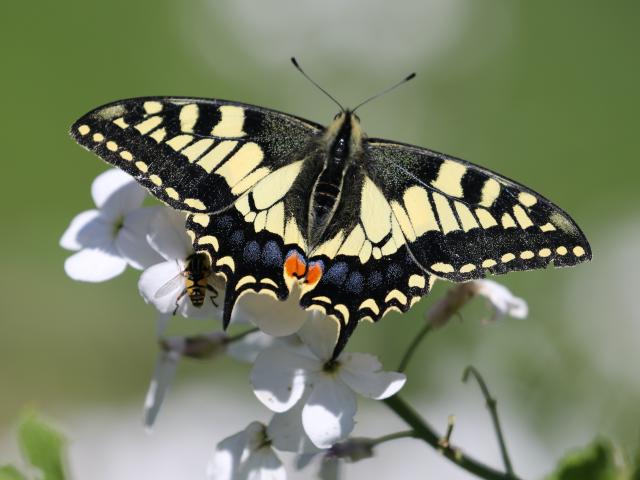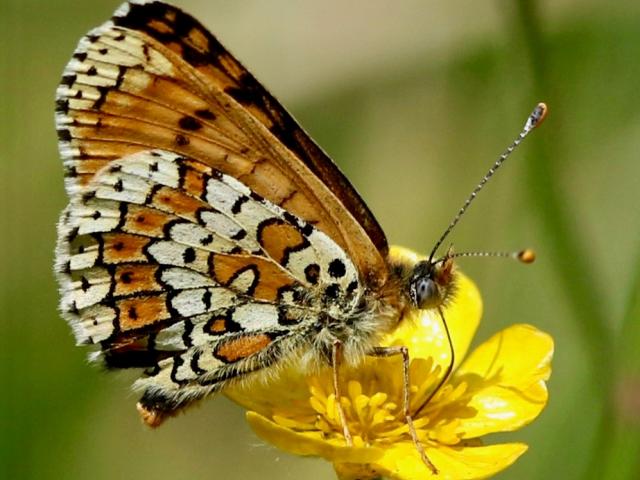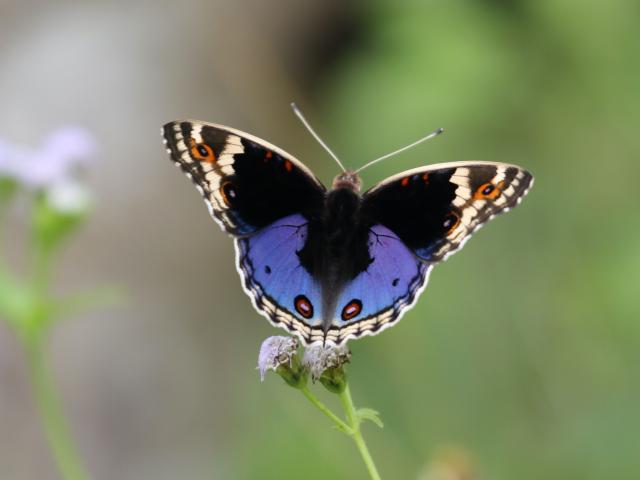He might not have always had a passion for butterflies, but broadcaster and author Frank Gardner has always had an instinct to protect them.
Picture this. It’s lunch break in the school playground and I’m seven years old. Some of the boys in my year have caught a butterfly and are planning to squash it, for fun. I’m not exactly sure what triggered it in me but I do know this was the first school fight I ever got into. Truth be told, I probably came off worse – well, there were more of them than of me – but the net result was that the butterfly went free.
That was my first-ever involvement with these beautiful and precious creatures that brighten our springs, summers and autumns (and at this rate, possibly our winters too). I remember as a child my mother telling me about a wonderfully rare species called a Camberwell Beauty. I have never managed to see one in Britain, but in North America, where they are known as Mourning Cloak, they are two a penny and I have been lucky enough to see them all over, from Alberta to Pasadena to Brooklyn, where one posed obligingly on a rock this year in the March sunshine.
Alright, so full disclosure: I’ve come late to the butterfly scene. I’ve been an avid birdwatcher since my early 30s and I probably only took notice of butterflies when I went somewhere truly exotic, like Colombia or Laos. Even then, I had no idea what I was looking at and had to get an expert like Dr Blanca Huertas at the Natural History Museum to help me identify them.

A captive audience
Lockdown changed all that. Confined to quarters for much of the day, I decided to make the most of that treasured hour of outdoor exercise we were allowed back in early 2020. Nature-watching takes a somewhat different form for me since a terrorist attack in Saudi Arabia in 2004 left my lower legs paralysed, leaving me dependent on a wheelchair to get around.
Inevitably, that makes some sites harder to visit, especially when someone has thoughtfully placed a stile in the way, effectively blocking access for the disabled, the infirm and those with children in pushchairs. Some places have taken the trouble to provide excellent access, like the London Wetland Centre, which has some gorgeous damselflies in summer. Others, like a certain bird reserve in Gloucestershire, had disappointingly poor access for wheelchairs when I went there last year.
To help me get around on rough terrain, I have a secret weapon: a manual hand-bike attachment that has a couple of dry cell batteries to give it a power boost. During lockdown I hitched my wheelchair to this and, using my arms, could propel myself to the nearest park or common to see what I could find.
That spring of 2020, if you remember, brought some gorgeous weather. In London the blossom was out, so was the sun and so, I discovered, were the butterflies. I got ridiculously close with my camera to a pair of mating Peacocks, while Orange-tips, Brimstones and Holly Blues were everywhere. And then, one sunny afternoon, I caught a flash of vivid green out of the corner of my eye. I was confused.
Did we even have a bright green butterfly in this country? I photographed it, looked it up and felt a thrill of excitement. It was my first-ever Green Hairstreak.
Holiday highlights
But there was an even better treat to come. Somewhere between Croydon and the Kent countryside, I was wheeling along a country lane on a warm June weekend when I noticed a tiny orange butterfly moving between grass stems close to the ground. I gave chase, got down low myself and snapped away with the camera, not knowing what I was looking at until I looked it up – a Glanville Fritillary. Another first!

So what has this year brought on the butterfly front? Well, I am pleased to say there have been two stand-out highlights for me this summer. First, a long overdue pilgrimage to Strumpshaw Fen in Norfolk in June, to see the famed British variant of the Common Swallowtail, Britain’s largest butterfly. To be honest, this is not much of a challenge: they’re right there at the entrance, feeding on a large bush, unperturbed by the constant clicking of cameras all around them. But, my goodness, these insects know how to pose for a photograph. It’s almost impossible to take a duff shot of those beauties!
And then, to Thailand, for a week’s summer holiday with my daughters in a country where, with around 1,200 butterfly species, they have roughly 20 times as many as we do here in Britain. I say ‘summer’ holiday, but on the island of Koh Chang, close to the Cambodian border, it rained rather more than we expected. Yet when the sun did appear, for a few brief hours, the meadows came alive with exotic butterflies: Common Birdwing, Tawny Coster, Lemon Emigrant, Common Sailor and Blue Glassy Tiger.
But the top prize, by a country mile, was the most exquisite insect I have ever laid eyes on: the Blue Pansy. I may still have another 19,875 species to see on this planet, but that butterfly will take some beating!

Frank Gardner OBE is the BBC’s Security Correspondent, President of the British Trust for Ornithology and author of the Luke Carlton series of spy novels. His latest book, Outbreak, was published in paperback this year.


